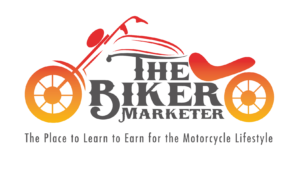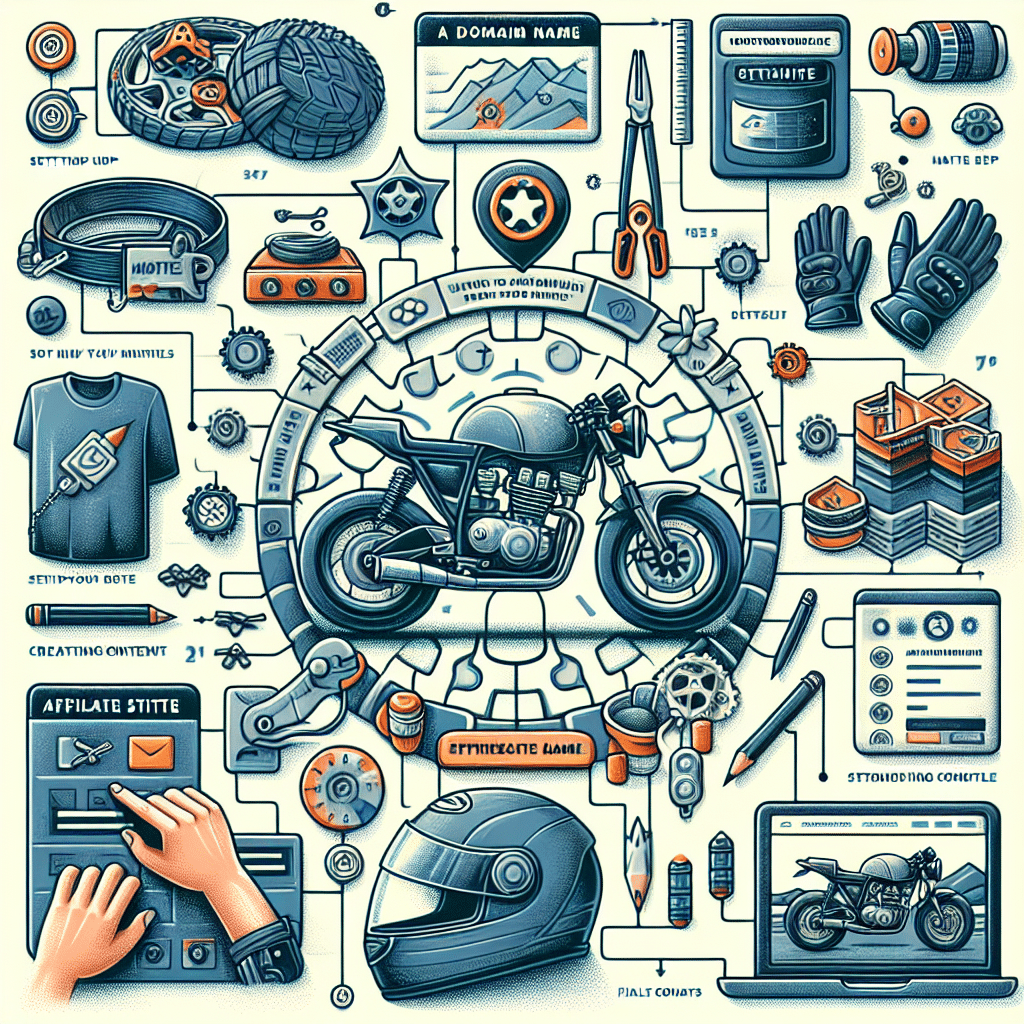Choosing a Niche
Understanding Your Audience
First things first, let’s talk about who you’re trying to reach. Knowing your audience is crucial. Are they weekend cruisers, hardcore riders, or maybe they’re interested in motorcycle maintenance? Once I figured out my niche, it made everything easier. I could tailor my content specifically for them.
I suggest you dive into forums, social media groups, and even local riding clubs to get a feel for what motorcycle enthusiasts are chatting about. This research will inform your decisions down the line, from the products you promote to the content you create.
Also, don’t forget that interests can overlap. A niche doesn’t have to be utterly specific; it can be broad but still focused. For instance, you could target motorcycle tours and still touch on gear and maintenance topics, which is what I did!
Identifying Profitable Products
Now that you’ve got a handle on your audience, it’s time to identify what products will actually make you money. You want to look for affiliate programs that align with your niche. Spend time reviewing affiliate networks and look for products that your audience will genuinely want.
I found a bunch of programs through networks like Amazon Associates, but don’t stop there! Look for companies that specifically cater to motorcycle gear and accessories. They often have better commission rates because they’re targeting a more engaged audience.
Don’t be afraid to test out products yourself; credibility is everything in this game. When I started, I wrote reviews on the bikes and gear I actually used, which helped build my trust with readers.
Setting Goals for Your Site
Before you jump in headfirst, it’s essential to set some realistic goals. What do you want to achieve with your site? Is it brand awareness? Or are you aiming for a specific amount of sales per month? I remember when I first started, I had lofty dreams of being a full-time affiliate marketer, which has definitely shaped my strategy.
Set SMART goals—Specific, Measurable, Achievable, Relevant, and Time-bound. This approach helped me to stay focused and organized. For instance, I aimed to earn my first $100 in affiliate commissions within three months. It gave me something to work toward.
And don’t forget to revisit those goals regularly. As I progressed, my focus shifted, and I had to adjust my strategies accordingly.
Building Your Website
Selecting a Domain Name
Picking a domain name is like naming your baby—it’s gotta be good and memorable! I spent a lot of time brainstorming names that reflected my niche and were easy to spell. It’s super important that people can easily recall your domain when they’re ready to return.
Tip: Keep it short! The longer the name, the higher the chance it’ll get misspelled or forgotten. Ideally, it should hint at your niche, like incorporating “moto” or “ride” into the name.
Once you settle on a name, grab it before someone else does. Domain names can get snatched up pretty fast, especially if it’s a catchy one. I learned that the hard way!
Choosing a Website Platform
Your website platform is where all the magic happens. I started with WordPress because it’s user-friendly and super customizable. There’s a ton of resources out there to help you get it up and running quickly.
Consider your technical prowess too; pick a platform that matches your skills. If you’re not tech-savvy, WordPress can be set up with plenty of support and plugins to help along the way.
Ultimately, make sure your platform is optimized for mobile, as more and more people are browsing on their phones these days. I can’t tell you how many times I’ve made purchases while researching on my phone.
Designing Your Site
Your site’s design speaks volumes about your brand. I suggest going for a clean and simple layout because clutter can confuse and drive visitors away. Use high-quality images, especially in a visually-driven niche like motorcycles.
Also, prioritize easy navigation. If visitors can’t find what they’re looking for, they’ll bounce, and you’ll lose potential sales. I’ve had great success with well-organized menus and a search function readily available.
Finally, don’t underestimate the power of a professional-looking logo. It’s the face of your site! I worked with a graphic designer who understood my vision, and it’s been a game changer in branding.
Creating Valuable Content
Understanding Content Types
When it comes to content, variety is key! I like to mix it up with how-to guides, gear reviews, and personal stories. This keeps my audience engaged and coming back for more. I found that a personal touch goes a long way; sharing my experiences riding or fixing bikes really resonates.
Don’t ignore the power of SEO-friendly content either. You want your articles to rank well on search engines. Research relevant keywords that your audience is searching for, and naturally incorporate them into your writing.
And don’t just write for the sake of writing. Each piece needs to add value. Ask yourself, “What do my readers gain from this?” If I can’t answer that question, I reconsider the content.

Promoting Your Content
Creating great content is just part of the battle; you’ve got to promote it too! Utilize social media to share your posts and engage with your audience. I’ve found that platforms like Instagram and Facebook work really well for motorcycle content.
Don’t overlook email marketing. Start building an email list early on! Send out newsletters with updates, exclusive content, and promotions. I always include a personal note to keep it friendly and relatable.
Networking is also huge. Collaborate with other bloggers or influencers in the motorcycle niche to cross-promote your content. I’ve had great success from guest posting on related sites!
Analyzing Your Content Performance
This might sound boring, but analytics are essential! Using tools like Google Analytics can help you track what’s working and what isn’t. The data helps me refine my approach and make informed decisions about future content.
Look for trends in your most popular posts. Invest time into writing more of what your audience loves. Analytics can tell you a lot about how long visitors are staying on your site and where they’re dropping off.
Don’t be afraid to experiment either! Test different types of content, headlines, and promotion strategies to see what resonates. The key is to stay flexible and ready to adapt.
Monetizing Your Affiliate Site
Selecting Affiliate Programs
The big moment has arrived—monetization! Choosing the right affiliate programs can directly impact your earnings. Look for programs that fit organically with the content you’ve created and offer decent commission rates.
I recently partnered with a company offering motorcycle gear that I personally use and love. It’s easier to promote products you truly believe in; your passion will come through in your content and drive sales.
Also, keep an eye on reviews of affiliate programs. You want to work with reputable companies known for paying their affiliates promptly. Do your research before jumping in!
Implementing Affiliate Links
Now that you’ve selected programs, it’s time to integrate affiliate links within your content. But, and this is the big but, make sure it feels natural. No one likes an aggressive sales pitch!
When I write a gear review, I make sure to seamlessly include affliate links within the text. For example, if I’m talking about my favorite helmet, I might add a link where readers can purchase it. It feels more like a recommendation than a sales tactic that way.
There’s also the option of adding banners or widgets. Just make sure they don’t clutter your site or detract from your actual content. Balance is key here!
Tracking Your Performance
Lastly, you need to track how your affiliate links and programs are performing. Most affiliate programs provide dashboards to see your clicks and conversions. I check mine regularly to see what’s working. Are people clicking through more on certain products? Are others falling flat?
Understanding which links perform well allows me to tweak my content. For example, if a specific helmet review is bringing in sales, I might boost that content with a social post or newsletter promo.
Adjusting your strategy based on the numbers will definitely improve your bottom line. Like they say, “What gets measured gets improved!”
Frequently Asked Questions
What is the most important step in setting up an affiliate site?
The most important step is understanding your audience. Without knowing who you’re targeting, it’s challenging to create meaningful content or promote suitable products that resonate with their interests.
How long does it usually take to start seeing earnings from an affiliate site?
It varies widely! Some people might see earnings within a few months, while for others, it may take a year or more. It really depends on factors like your niche, traffic, and promotion efforts.
Do I need to have technical skills to create an affiliate site?
No, you don’t need to be a tech genius! With platforms like WordPress, even beginners can set up an attractive site with the help of tutorials and plugins. Just take it one step at a time.
Can I promote products I don’t personally use?
While it’s possible, I’d advise against it. Promoting products you don’t believe in can harm your credibility with your audience. It’s always best to stick with what you know and trust.
What should I do if my website isn’t generating traffic?
If you’re struggling with traffic, consider ramping up your promotional efforts. Analyze your SEO to better target your audience. Focus on networking, social media engagement, and leveraging email marketing to attract more visitors.


